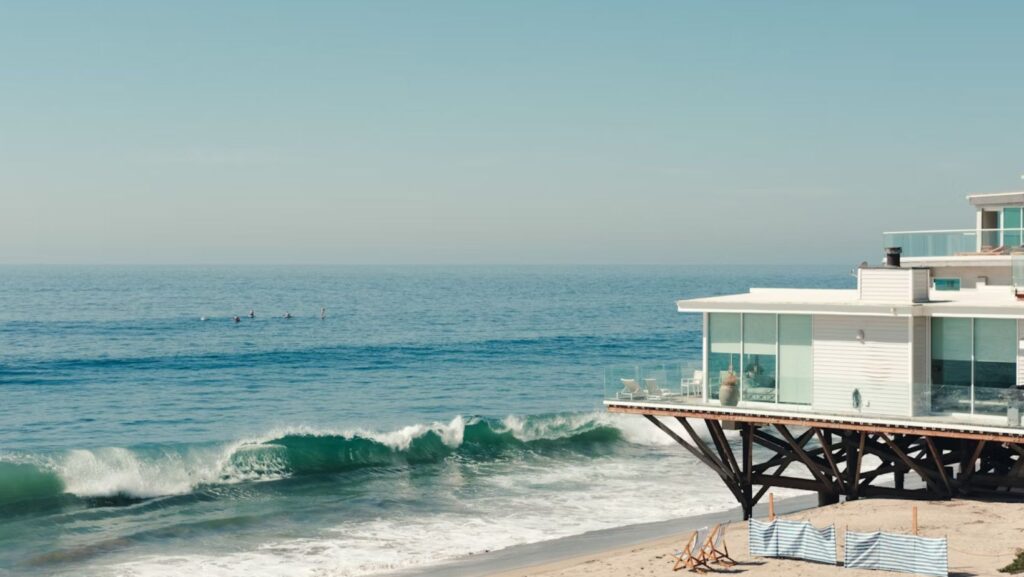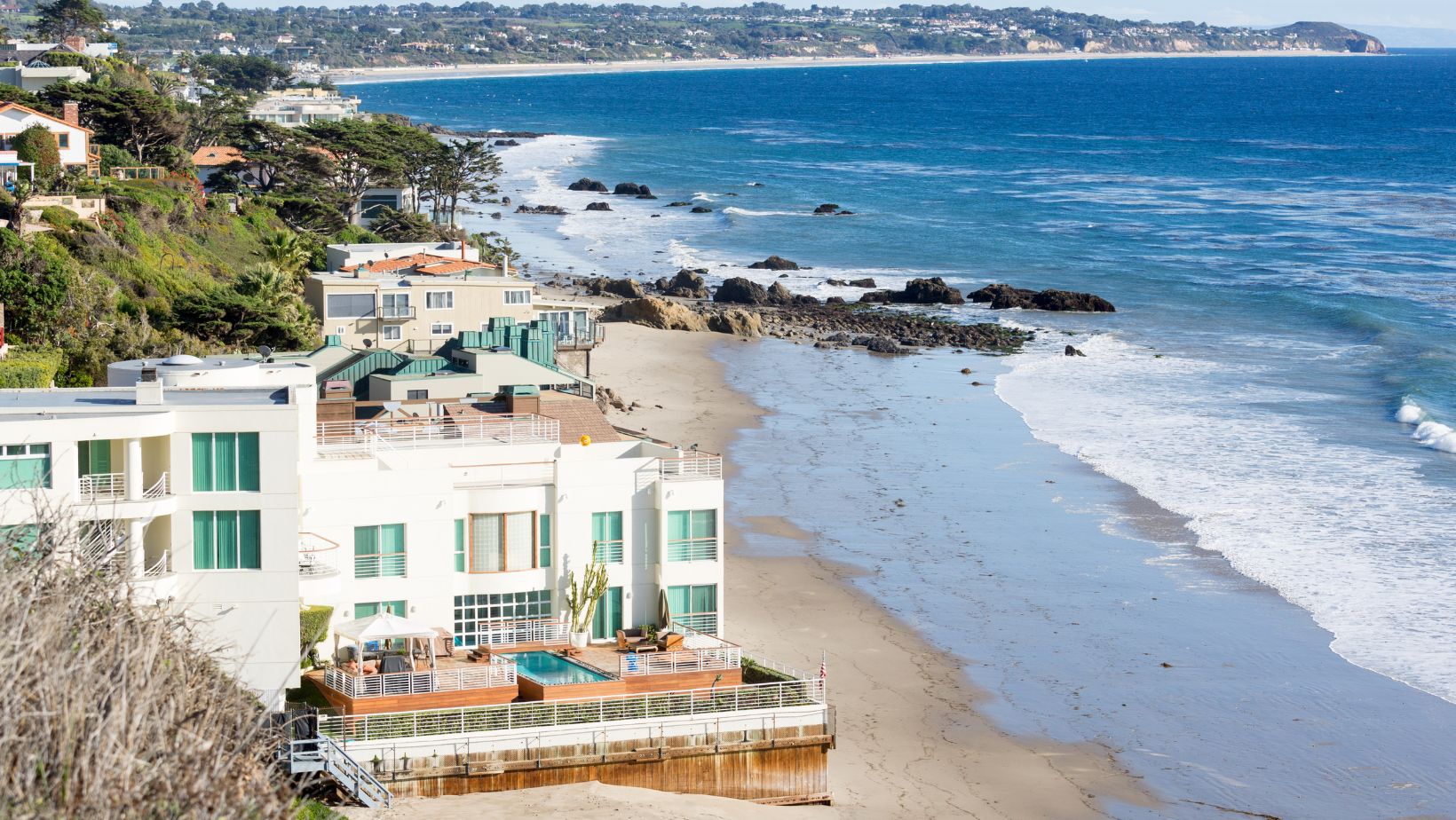Could there be anything comparable to relaxing on a beach chair under a private pergola of one’s luxury home facing the vast ocean? It is no wonder that more and more people are ditching their ultra-urban abodes and moving closer to the waters.
Besides the thrill of water sports and unparalleled aesthetics, folks near the sea may have the unique advantage of enjoying thalassotherapy. It is the practice of using salt water for healing. Experts do believe that living near the sea may have a positive impact on one’s mental health.
In light of such pros, it may do us well to enjoy a slice of the ocean via coastal luxury. The question is how do home designing principles operate to concert with the elements? In this article, we will discuss four ways architecture has evolved to design coastal homes that acclimate well to their surroundings.
Installing Expansive Windows, Preferably With Low-E Glass
With the mesmerizing ocean in sight, it is natural to want to take it all in from every room of the house. This is why luxury coastal homes usually feature expansive windows. These may be in casement style or a substitute for the wall blurring the lines between the indoors and the outdoors.
Such windows will naturally light up the spaces to the extent that no artificial lighting will be required during the day. The only downside is that these may attract heat in equal measure. Let’s take the example of the vibrant town of Cabo San Lucas, located in the Mexican state of Baja California Sur.
We chose this place given how unlikely its landscapes and unique climate were. Cabos is essentially a desert surrounded by the coast. As a result, the climate is arid, with the town receiving sunshine for around 350 days a year. Luxury Cabo real estate listings, include properties that may receive direct sunlight and heat in all rooms, possibly throughout the year.
According to Del Mar Los Cabos, the area epitomizes sophistication, luxury, and breathtaking beauty. So, it is natural not to want to skimp on the view or natural light. This is why installing low-E or low-emissivity glass with Argon insulation onto the expansive multi-pane windows can help.
The glass includes a thin coating that reflects all short and long-wave infrared rays of the sun. What’s allowed to pass is visible light. The Argon insulation between the multiple panes prevents heat loss and promotes thermal efficiency. Hence, residents can enjoy all the light they want without worrying about excessive heat.
Placing Skylights at Different Angles
A premium home that sits peacefully near the ocean is all about making the most of the breathtaking views and fresh air circulating from the waters. One way to accomplish both purposes with a single trick is adding skylights.
While laying the groundwork for a coastal home overlooking Easton Bay on the Atlantic Ocean, builder Mark Horan had no intentions of installing skylights. However, the final outcome was a whole lot different. He ended up installing solar-powered skylights on the third-floor study to open up the sky and facilitate cross-ventilation.
What’s interesting is that these structures can be installed in different angles or directions to make use of the wind. For instance – suppose a coastal luxury home is located at a spot that receives excellent south and west winds. Skylights can be placed in the respective directions for much-needed cross-ventilation.
The best part is that there can be a plethora of installation options to make a luxury design statement. Examples would include aligning the skylight with windows, offsetting it to create drama, accentuating sloped ceilings, and highlighting exposed beams. This is best left to the expertise and experience of the architect who will consider their client’s tastes.
Investing in a Cupola
Luxury real estate is never complete without towering ceilings that exude grandeur. While the scope is practically endless, one surefire way to exude the coastal grandeur is through a cupola.
This structure can render a genuine coastal feel as it was originally used as a beacon for watermen. Most lighthouses host a cupola or beacon dome at the top to guide mariners. Important functions of this architectural element in a coastal luxury home can be better lighting, improved airflow, and enhanced visual appeal.
The interesting part is that cupolas can be customized in a variety of ways to manipulate the degree of ventilation. This may happen in the form of material, roofing, louvers, or screens. What’s more, is that the beacon area may have an ornate chandelier or light fixture installed to add character and a focal point.
Incorporating Sensational Cantilevers
Cantilevers or protruding beams and structures are not limited to coastal homes. They may be used to create functional carports, utilize tricky sites, and maximize space. Regarding luxury homes along coastal grounds, a cantilever may be used to protect windows against direct sunlight.
The most typical way home designers incorporate these structures is by offering aesthetic views to residents. For instance – a luxury home may occupy land in a manner that certain rooms do not have complete access to the amazing sea view.
For such spaces, a cantilevered room may serve as the ‘room with a view.’ The amazing aspect of this is that it may be possible to extend every room, even those sitting at the belly of the home, to maintain a consistent view of the outdoors.
This will undoubtedly require much discretion on the architect’s part as robust beams with double-paneled windows may be necessary. It is to ensure that the structure can withstand heavy gusts of wind.
Besides, a cantilevered area allows for more windows (on three sides of it), thereby increasing the scope for nature’s glow. With them, there shall never be a dull room or moment in the home.
The architectural ideas mentioned in this article may be more useful than ever now since demand for beach houses is increasing. Exhibiting a CAGR of 7.5%, the modern coastal home market is expected to cross $22.29 billion by 2030.
The interesting part is that those who cannot stay near the ocean may incorporate various beachy elements to create the vibe. This calls for masterful interior design in the form of natural textures, seaside accessories like shells, blue accents, and open floor plans.




More Stories
How Barn Fans and Exhaust Systems Improve Air Quality
Villa vs Condo in Phuket: Which Property Type Is Right for You?
Outfitting Your Warehouse Right: Premium Supply Choices for Peak Productivity